Background Paper to Supporting Healthy Choices
Background Paper to Supporting Healthy Choices
1. The Scottish Diet
1.1 Background to approach taken in Supporting Healthy Choices
The majority of the adult population in Scotland is overweight (64.3%), with over a quarter classed as obese (27.1%) in 2012[1]. Individuals of a normal weight are now in the minority. The 2012 Scottish Health Survey data suggests that the prevalence of overweight and obesity in adults increased significantly between 1995 and 2012 but has remained fairly stable since 2008. In children, the proportion at risk of overweight including obese has increased from 29.1% in 1998 to 32.8% in 2008 but since then has fluctuated with no clear pattern (30.6% in 2012).
Overweight and obesity are a result of a positive energy balance, which is caused in part by an over consumption of calories. Obesity is linked to diseases such as type 2 diabetes mellitus, heart disease, stroke and high blood pressure. For example, around 80% of people with diabetes are overweight or obese[2]. Excess total fat and sugars can increase calorie intake and in turn contribute to overweight and obesity. In recognition of this, a population level Scottish Dietary Goal has been set to reduce calorie intake by 120kcal/person/day.
Among OECD countries, Scotland has some of the highest levels of obesity prevalence for men and women. Obesity comes at a cost to society: direct costs to the UK NHS have been estimated at over £5.1 billion per year[3]. In 2007-8 the total cost to society (including direct and indirect costs) of obesity in Scotland was estimated to be in excess of £457 million and the redicted costs to Scotland by 2030 are in the region of £0.9 to 3 billion per year[4].
Specific dietary components are also associated with an increased risk of diet related diseases. Consumption of diets high in saturated fats can increase blood cholesterol levels and result in an increased risk of coronary heart disease (CHD).[5][6] In contrast, unsaturated fats can help to lower blood cholesterol and provide essential fatty acids which in turn can be protective against CHD. Diets high in sugars are linked with increased risk of dental caries[7]. High salt intake increases the risk of high blood pressure which can lead to increased risk of heart attack or stroke. Even a modest reduction in population intakes of saturated fat and/or salt has the potential to reduce the burden of diet related disease on society[6][8]. Diets in Scotland contain too much fat, salt and sugar[9] and therefore these nutrients can be considered to be of public health concern.
The Scottish Dietary Goals[10] comprise a number of evidence based food and nutrient goals that indicate, in dietary terms, the direction of travel required to improve the Scottish diet. The Food Standards Agency in Scotland (FSA Scotland) have a surveillance programme in place to monitor the diet of the Scottish population, and progress towards the goals. See Appendix 1 for a summary of the goals and the evidence supporting them.
Health inequalities exist in terms of dietary intake, prevalence of obesity and diet related disease. Those living in more deprived areas tend to have the poorest diets, and women from the most deprived areas are at greatest risk of developing obesity[11]. Disparities are apparent in childhood; the 2010 survey of children living in Scotland[12] found that the prevalence of overweight (including obesity) increased as the level of deprivation increased.
1.2 FSA in Scotland dietary surveillance programme
The FSA Scotland dietary surveillance programme primarily monitors population dietary intakes using secondary analysis of the Living Costs and Food survey (LCF)[9] with additional de novo surveys of children's intakes[12][13] and surveys of population salt intakes[14][15]. To monitor food intake using the LCF survey we have established a robust secondary analysis methodology[9] in which sets of conversion factors are applied to convert raw food to cooked weight and to account for the proportion of waste. Nutrient intakes for foods consumed across the whole day are then calculated per person. Results for three years data combined can be used for analysis by the Scottish Index of Multiple Deprivation (SIMD).
More recently the FSA Scotland dietary surveillance programme has expanded to track retail food and drink purchase in Scotland both into the home[16] and out of the home[17] using market research data from Kantar Worldpanel (KWP)[a] and NPD Group[b] respectively.
KWP data provides the volume purchased for all food and drink categories in Scotland and the associated nutritional composition of each category based on food label data. Information on the proportion sold on promotion[c] is also provided. This allows assessment of changes over time in the purchase volume and nutritional composition of individual food and drink categories including those on promotion, and assessment of the total retail purchase of calories, fats, sugar and salt into the home in Scotland. Data from KWP has also been used to monitor progress on salt reduction of manufactured products in Scotland[18].
The out of home landscape has been described using data provided by NPD Group. This data provides information on the frequency and types of foods and drinks consumed out of home in Scotland, including by different age groups. However,
only limited information on the nutrient composition of foods and drinks purchased out of home is available.
1.3 Evidence on dietary intake in Scotland
Based on evidence from the LCF there have been only very modest improvements in dietary intakes since 1996 and persistent inequalities in dietary intakes remain[9]. Table 1 shows that little or no progress, at population level, has been made towards any of the goals between 2001 and 2011. There has been no increase in household consumption of fruit and vegetables and oil rich fish and only a very small reduction in saturated fats and non-milk extrinsic sugars[d] (NMES) intakes, which are still too high. This lack of progress towards the goals is supported by surveys of children's diets[12][13] which mirror the household surveys and have shown that intakes of fruit and vegetables and oily fish remain too low, whereas intakes of added sugars and saturated fats are too high.
Two urinary salt surveys carried out Scotland in 2006[14] and 2009[15] did not show a statistically significant reduction in population salt intake; the last reported average salt intake of 8.8g/day in 2009 was well above the Scottish Dietary Goal (of <6g/day). To drive further reductions of salt in food products, a new set of salt targets for 76 categories have been set for achievement by 2017[19].
The data also show differences in dietary intake with deprivation, those living in more deprived areas tend to have poorer diets. Deprived households have the lowest intakes of fruit and vegetables, oily fish and dietary fibre and highest intakes of added sugars (Table 1). This trend is also observed in the children's surveys where children living in the most deprived areas of Scotland have the highest intakes of added sugars and lower intakes of fruit and vegetables, oily fish and dietary fibre[12][13]. In addition, those in the more deprived areas tend to have more energy (calorie) dense diets[20] (see Table 1). Addressing these inequalities in diet is a priority for the Scottish Government.
Table 1: Progress towards the Scottish Dietary Goals (data from LCF and 24 hour urinary surveys*)
| Nutrient/Food | Scottish Dietary Goal | Change in household intake from 2001 to 2011 LCF | Progress made? | Highest consumption by deprivation |
|---|---|---|---|---|
| Energy (calorie) density | Decrease to 125 kcal/100g |
Increase from 171 to 175 kcal/100g | No | Most deprived |
| Fruit and vegetables | More than 400g/day |
Remains around 250g (3.1 portions) | No | Least deprived |
| Oil rich fish | 140g/week | Remains around 30g | No | Least deprived |
| Dietary fibre | 18g/day | Remains around 12g | No | Least deprived |
| Fat | ≤35% food energy | Remains around 39% | No | No difference |
| Saturated fats | ≤11% of food energy | Small reduction of 15.5% to 15.0% | Slow | Least deprived |
| Non-Milk Extrinsic Sugars (NMES) | <11% of food energy | Reduction from 15.5% to 14% | Slow | Most deprived |
| Salt* (g) | ≤6g/day | 9.0g in 2006 and 8.8g in 2009* | No | Unknown |
1.4 Evidence from market research data on food and drink purchase into the home
Household purchase data from KWP[16] from 2010 to 2013 support the findings above from the LCF; fruit and vegetable purchases have not increased since 2010 with lower levels of purchase in deprived households. Data from KWP also confirm little change since 2010 in total fat, saturated fats, and total sugars purchased into the home and suggest a trend of increasing calorie purchase over the longer term (see Table 2).
Table 2: KWP data on total take home purchases of energy, sugar and fats in Scotland (2010-13)
| 2010 | 2011 | 2012 | 2013 | |
|---|---|---|---|---|
| Energy (kcal) | 4,035,388,000,817 | 4,080,270,241,933 | 4,142,827,675,905 | 4,149,319,507,782 |
| Sugar (kg) | 220,311,731 | 227,553,307 | 228,930,744 | 229,729,122 |
| Fat (kg) | 161,434,107 | 162,229,691 | 163,823,017 | 164,848,797 |
| Sat Fat (kg) | 60,497,451 | 61,988,734 | 62,677,945 | 63,727,459 |
Progress on salt reduction in foods was monitored in Scotland in 2012 using KWP data. Data were derived by combining food purchase data with salt labelling data. This confirmed that the same food categories were contributing the most salt in Scotland
as the rest of GB and that there was considerable scope for further salt reductions[18].
1.5 Evidence on the out of home landscape
Eating out of home makes up an important part of our diet. Evidence from the LCF in Scotland indicates that eating out accounts for around 12% of total energy intake[9]. Recent analysis by FSA Scotland found that food eaten out of home in Scotland had a mean energy (calorie) density which was 30% higher than food eaten at home[20]. The World Cancer Research Fund (WCRF) reported that eating calorie dense foods is likely to result in the consumption of excess energy and hence the promotion of weight gain and obesity[21].
The market for out of home food and beverage purchase is very diverse ranging from formal restaurant dining to eating on the go, and includes quick service restaurants[e] (QSR), workplace canteens, pub chains, coffee shops, vending machines, supermarkets, corner shops etc.
Data provided to FSA Scotland by NPD Group from 2011-12 suggests there were nearly 1 billion (950 million) out of home visits in Scotland in 2012 and an annual purchase of over 2 billion servings of foods and drinks[17].
Whilst there is no nutrient data from NPD, the food and drinks most commonly purchased out of home in Scotland are presented in Figures 1 and 2. The data show that many of the foods and drinks that consumers purchase when eating out are likely to be high in calories, fats and sugar. QSR was the major source of many of these foods and drinks.
Figure 1: Top 10 categories[f] (defined by NPD) of foods purchased out of the home in Scotland in 2012
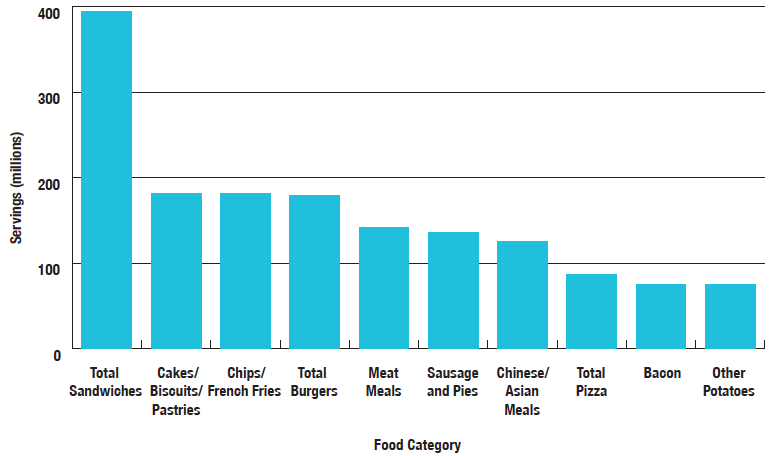
Figure 2: Top nine categories[g] (defined by NPD) of beverages purchased out of the home in Scotland in 2012
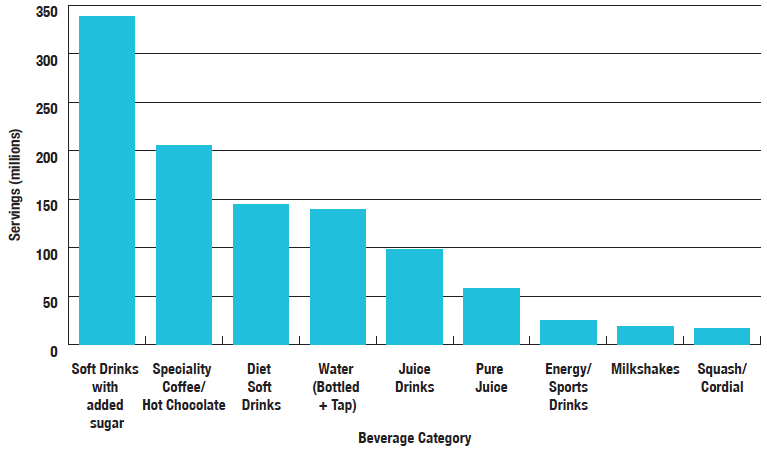
1.6 Evidence on promotions
Promotions include a range of activities designed to provide added value and/or incentives to the consumer with the aim of stimulating sales. Retail data on foods purchased into the home from KWP suggest that despite a slight decrease in promotions in 2013, nearly 38% of all calories and 41% of calories from total fat and saturated fats were purchased on promotion. More than 50% of savoury snacks, regular soft drinks and confectionery were purchased on promotion in 2013 (Figure 3), compared to healthier alternatives such as fruit and vegetables and plain starchy carbohydrates where less than 30% were purchased on promotion.
There are also differences in purchase of food and drinks on promotion by SIMD; a higher proportion of food and drink is purchased on promotion by the most affluent households in Scotland as shown in Figure 4.
Figure 3: Proportion of retail purchases (volume sold) on promotion in 2013 in Scotland
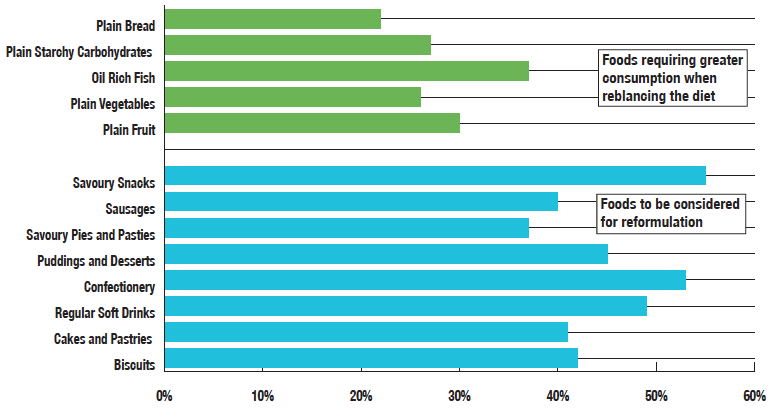
Figure 4: Percentage of calories purchased into the home on promotion by SIMD (SIMD 1 least affluent) in Scotland - Data from KWP
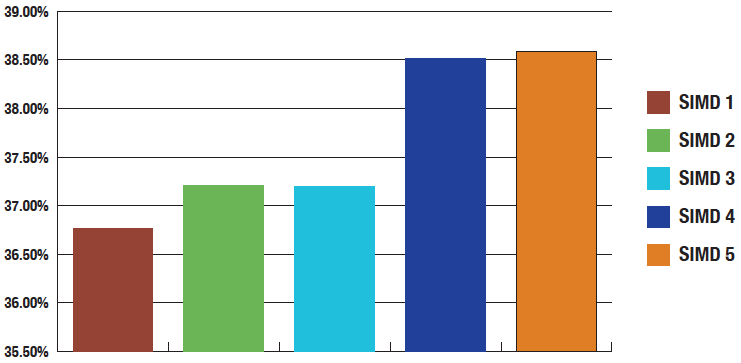
Promotions are also steadily increasing in the out of home market; in Scotland since 2010 a quarter of all eating out visits involved a promotion. The food categories that were most likely to be on promotion in 2011-12 are shown in Figure 5.
Figure 5: Proportion of volumes sold on promotion 2011-12 out of home
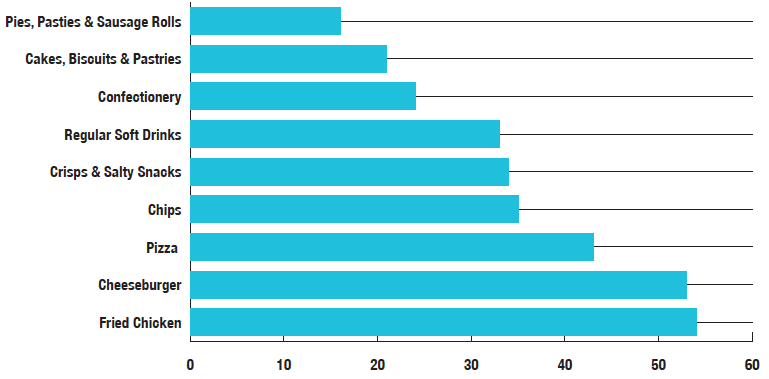
1.7 Summary of evidence
In summary, levels of overweight, obesity and diet related diseases remain of public health concern in Scotland. The Scottish diet, over many years, has failed to achieve dietary recommendations for health as set out in the Scottish Dietary Goals. Evidence also shows that the most deprived are disproportionately affected. Total fat, saturated fat, sugars and salt are consistently found to be consumed in excess by the Scottish population. Foods and drinks, high in these nutrients of concern, are commonly promoted both in retail and in out of home settings. It is therefore important that the main food sources of these nutrients are identified and work is undertaken to reformulate these to remove excess fats, sugars and salt (see Section 2). Shifting the balance to reduce calories and the excess consumption of these nutrients is essential if we are to progress towards achieving our dietary goals and so improve health in Scotland.
Contact
Email: Leigh Edwardson
There is a problem
Thanks for your feedback